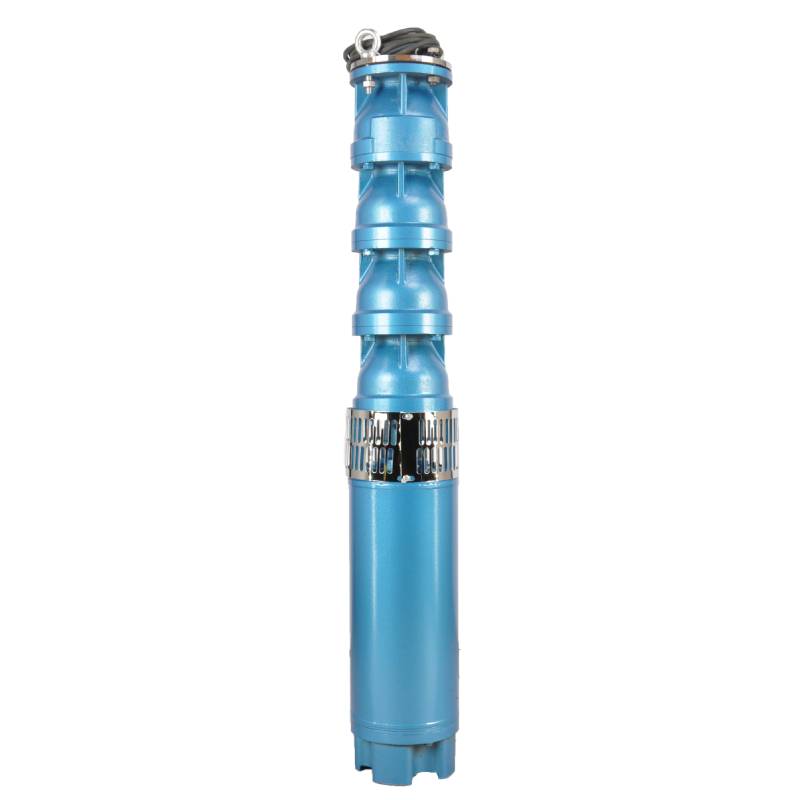Nov . 27, 2024 23:09 Back to list
Guide to Installing Deep Well Submersible Pumps Efficiently and Safely
Deep Well Submersible Pump Installation
Deep well submersible pumps are essential components in various applications, including agricultural irrigation, municipal water supply, and industrial processes. Their ability to efficiently lift water from significant depths makes them indispensable tools for accessing groundwater. Understanding the installation process of these pumps is crucial to ensure operational efficiency and longevity.
Understanding Deep Well Submersible Pumps
A deep well submersible pump consists of a motor and a pump assembly that are submerged underwater. The motor typically sits at the bottom of the well, coupled directly to the pump, making it capable of pushing water to the surface under high pressure. This design allows for the extraction of water from depths that centrifugal pumps cannot effectively manage.
Pre-Installation Considerations
Before beginning the installation of a deep well submersible pump, several factors should be assessed
1. Site Assessment Conduct a thorough evaluation of the well site. Understand the depth of the water table, the well diameter, and the existing infrastructure, including power supply and surface piping systems.
2. Pump Selection Choose the appropriate pump based on the desired flow rate and total dynamic head (TDH). Different pumps have varying capacities and efficiencies, so it is crucial to select one that matches the application requirements.
3. Safety Measures Always prioritize safety. Ensure that all personnel are trained and equipped with the necessary safety gear. Confirm that electrical systems meet local codes and standards to prevent accidents during the installation process.
Installation Steps
The installation process for a deep well submersible pump generally follows these steps
deep well submersible pump installation

1. Preparation of the Well - Clean the well casing to remove any obstructions or debris. - Inspect the well casing for damage that may require repairs before installing the pump.
2. Assembling the Pump - Assemble the pump and motor according to the manufacturer's specifications. Pay attention to orientation and ensure all seals are appropriately lubricated to prevent leaks.
3. Lowering the Pump - Use a crane or a winch system to lower the pump into the well. It is critical to ensure the pump is lowered vertically to avoid damaging the motor and piping.
4. Electrical Connections - Connect the electrical wiring to the pump motor. Verify that all connections are secure and insulated to prevent water ingress and electrical hazards.
5. Check Valves and Pipe Fittings - Install check valves and secure pipe fittings to prevent backflow and ensure efficiency in water delivery. This is also an important step to minimize wear and tear on the pump.
6. Testing - After the installation is complete, perform a test run. Check for proper operation, monitor discharge pressure, and ensure that there are no leaks in the system. Adjustments may be necessary to optimize performance.
7. Final Inspection and Documentation - Conduct a final inspection of the installation to ensure compliance with all safety and regulatory standards. Document the installation for future reference, including depth measurements, pump specifications, and maintenance schedules.
Maintenance and Longevity
To ensure the longevity of a deep well submersible pump, establish a regular maintenance schedule. This schedule should include routine inspections, cleaning, and testing of electrical components. Issues such as abnormal noise, vibration, or performance drops should be addressed immediately to avoid costly repairs and downtime.
In conclusion, installing a deep well submersible pump is a comprehensive process that requires careful planning and execution. By following the correct procedures and focusing on safety, efficiency, and maintenance, users can enjoy reliable water extraction for many years to come. Proper installation not only enhances the pump's performance but also contributes to sustainable water management practices.
-
Submersible Water Pump: The Efficient 'Power Pioneer' of the Underwater World
NewsJul.01,2025
-
Submersible Pond Pump: The Hidden Guardian of Water Landscape Ecology
NewsJul.01,2025
-
Stainless Well Pump: A Reliable and Durable Pumping Main Force
NewsJul.01,2025
-
Stainless Steel Submersible Pump: An Efficient and Versatile Tool for Underwater Operations
NewsJul.01,2025
-
Deep Well Submersible Pump: An Efficient 'Sucker' of Groundwater Sources
NewsJul.01,2025
-
Deep Water Well Pump: An Efficient 'Sucker' of Groundwater Sources
NewsJul.01,2025
-
 Submersible Water Pump: The Efficient 'Power Pioneer' of the Underwater WorldIn the field of hydraulic equipment, the Submersible Water Pump has become the core equipment for underwater operations and water resource transportation due to its unique design and excellent performance.Detail
Submersible Water Pump: The Efficient 'Power Pioneer' of the Underwater WorldIn the field of hydraulic equipment, the Submersible Water Pump has become the core equipment for underwater operations and water resource transportation due to its unique design and excellent performance.Detail -
 Submersible Pond Pump: The Hidden Guardian of Water Landscape EcologyIn courtyard landscapes, ecological ponds, and even small-scale water conservancy projects, there is a silent yet indispensable equipment - the Submersible Pond Pump.Detail
Submersible Pond Pump: The Hidden Guardian of Water Landscape EcologyIn courtyard landscapes, ecological ponds, and even small-scale water conservancy projects, there is a silent yet indispensable equipment - the Submersible Pond Pump.Detail -
 Stainless Well Pump: A Reliable and Durable Pumping Main ForceIn the field of water resource transportation, Stainless Well Pump has become the core equipment for various pumping scenarios with its excellent performance and reliable quality.Detail
Stainless Well Pump: A Reliable and Durable Pumping Main ForceIn the field of water resource transportation, Stainless Well Pump has become the core equipment for various pumping scenarios with its excellent performance and reliable quality.Detail
